It’s the start of a new school year! It’s time to buy clothes and supplies. It’s time to pack lunches and it’s time to commute to and from school. Buying brand new school supplies every year creates a lot of waste. There are a lot of small changes you can make to reduce your environmental impact. Here are 8 hacks to simplify and green your back-to-school strategy.
#1 Shop at Home Before Going to The Store

Before heading out to the stores for back-to-school supplies check around your home and look at what you already have before buying anything new. You’d be surprised at what you might find. A handful of loose pencils, erasers good enough for another year, enough crayons to add to a box? Is last year’s backpack still in good shape? How about that lunchbox? Is there a notebook with only two-pages used in it – reuse it! Perhaps something can be handed down from sibling to sibling or call a friend for a supply swap! Make a shopping list after making an inventory of what you have at home already before you head out to shop at the stores.
#2: Only Buy What You Need
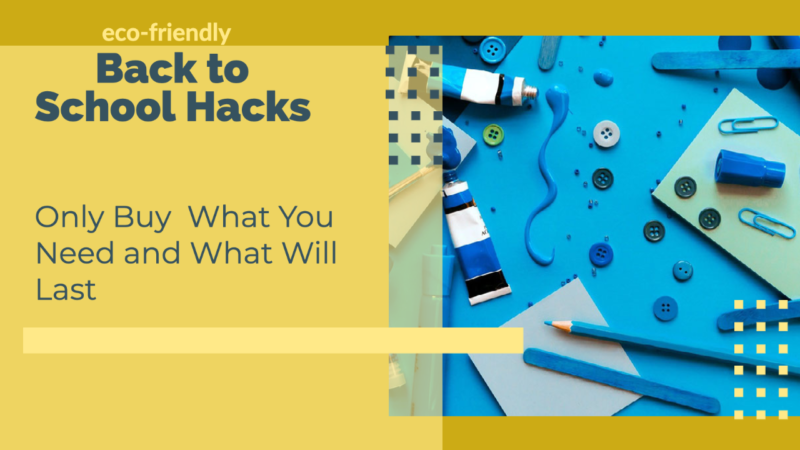
This year, make sure to think twice before buying something new. Ask yourself two simple questions: “Do I really need this?” and “Will this last more than six months?” Not only will this help you save money, but it’ll also help the environment by preventing pollution caused by the need to harvest raw materials.
#3: Buy Second Hand

Buying second-hand items, whether clothing, electronics, or books, is cheaper and more sustainable than buying new things. Buy used items to reduce waste and the emissions created by producing new materials or disposing of them in landfills. Read Help for a Zero Waste/Plastic Free Lifestyle for places to buy second-hand goods and more tips on reusing and repairing what you have.
#4 Shop Local, Shop Sustainably
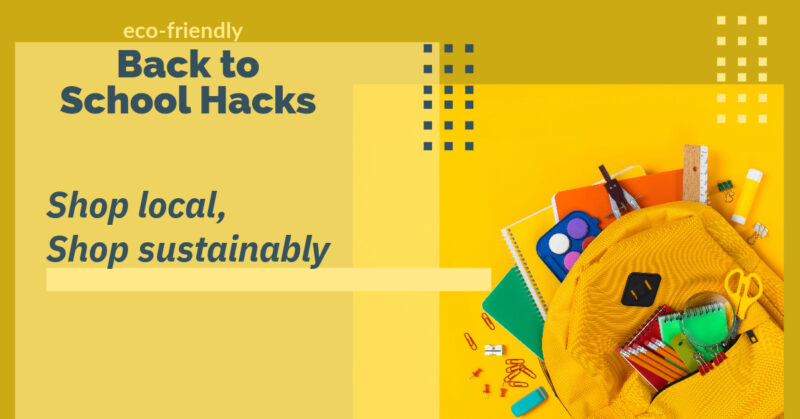
It’s no secret that the way we consume is having a huge impact on our environment. To help make a difference, shop local when buying secondhand isn’t an option. Shopping locally supports the community and helps reduce environmental impacts, conserving energy and resources in the form of less fuel for transportation and less packaging. Look for sustainable school supplies such as recycled pencils and markers, refillable or recycled pens, and 100% recycle
#5 Choose Plastic Free
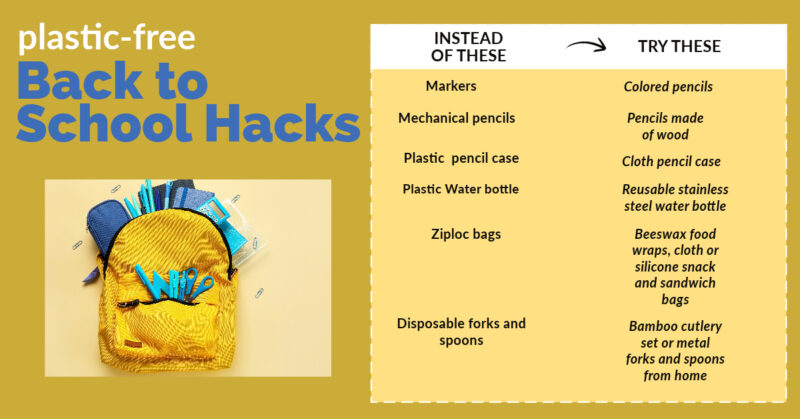
The best thing is to use what you have, but if it’s time to replace or replenish back-to-school supplies consider plastic-free alternatives. Instead of markers, use colored pencils, swap plastic mechanical pencils that come in plastic wrapping with pencils made of wood, look for pencil cases made from cloth or create your own. Ditch plastic water bottles for reusable stainless steel bottles. When packing a lunch, say no to plastic sandwich and snack bags and try beeswax food wraps, cloth or silicone snack and sandwich bags along with reusable stainless steel containers, use a bamboo cutlery set or metal forks and spoons from home. For more information, read The Top Five Reasons Why We Need To Reduce Our Use of Plastic.
#6 Go Green
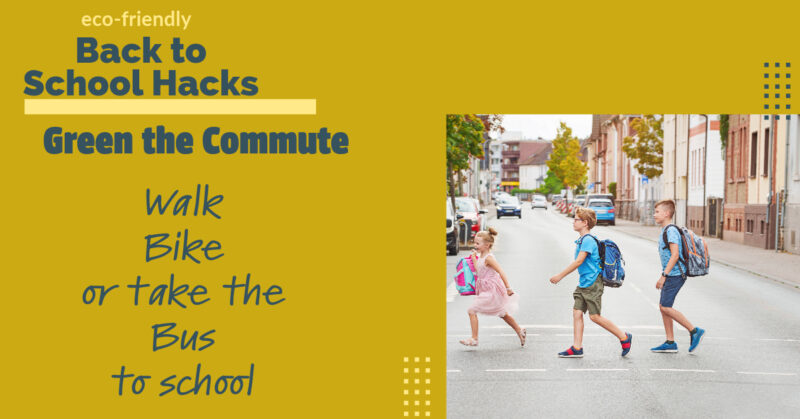
How do you or your student go to school? The best options for a greener planet are to walk, bike or take the bus. The “Us Bus” is an Arlington initiative that matches senior adult volunteers with Arlington elementary students/families to engage seniors and support students walking to school. And did you know the Student iRide SmarTrip card lets Arlington students ride ART for free? Students may get an iRide SmarTrip card at a Commuter Store or through the Transportation Coordinator at their school.
#7 Don’t Idle
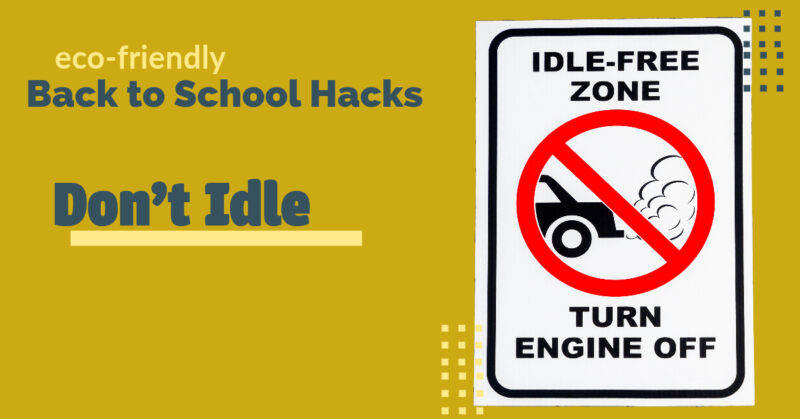
We’ve talked about The Dangers of Idling before; if you can’t walk, bike or take the bus to school; turn off the car engine while waiting to drop off or pick up your children. Idling your vehicle pollutes the air. This is particularly an issue at schools because many bus drivers and parents sit with their vehicles idling while waiting to drop off or pick up their children. The amount of dirty air surrounding the school can prove very dangerous to children’s lungs and airways. Young children’s lungs are still developing which makes them especially vulnerable to smog.
#8 Pack a Waste-Free Lunch
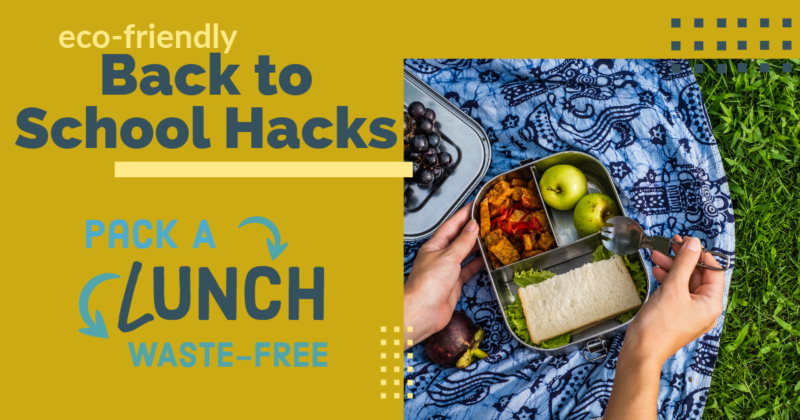
Pack a waste-free lunch using reusable containers, plastic or cloth bags and bring drinks in a reusable bottle or thermos. Read EPA’s Pack a Waste Free Lunch guide for more tips. Do your best to minimize food waste. Food waste is a great global problem. When added to a landfill, food waste creates methane gas, which contributes to the climate crisis. It wastes the energy that was used to produce the food as well as to transport it and store it. To help minimize food waste, plan ahead, know what you have in the fridge, shop with a list, and don’t buy more than you need. Compost leftovers and food scraps. You could even work with your school to start a composting program!
Tell us what actions you take to make the back-to-school experience eco-friendly. Which of the above tips do you already do? Do you have any tips to add to this list? Please let us know and be sure to share this list with someone you think could make this school year the start of a more sustainable lifestyle!

